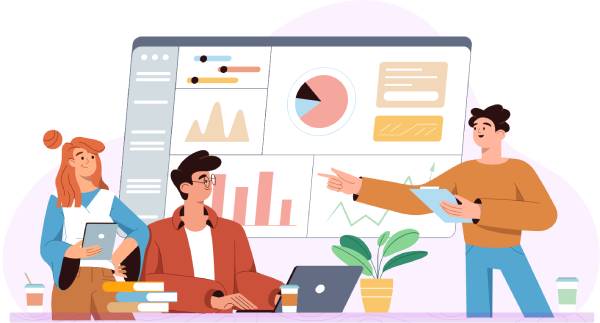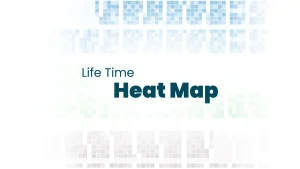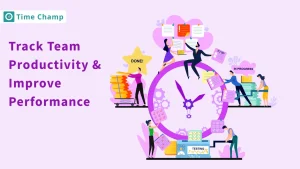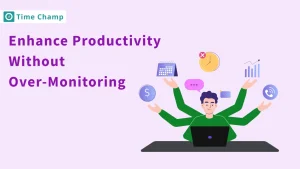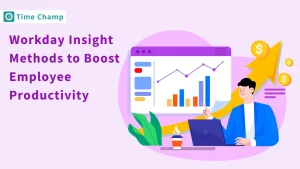You sit on your desk. Get a cup of
coffee. You roll up your sleeves,
ready to start the day. The next
time you look at the clock, hours
have slipped away. Where did time
go?
Wasting time, intentional
or not, is inevitable. No matter the
setting – whether at home or
in a workplace. From being
overwhelmed by urgent tasks to the
continuous beeping of your email,
it’s possible to become
diverted or overwhelmed by
assignments.
Let’s
discuss the deceptive distractions
that can throw off even your most
well-thought-out schedules and
consider some effective methods for
regaining focus and productivity.
Common Time-Wasting Habits and How to Overcome Them
Habit 1: Multitasking
Multitasking is often required in
different types of work. Customer
service representatives having
multiple chat windows open at the
same time. Nurses monitor multiple
patients’ vital signs while
administering medications. Chefs
preparing multiple dishes at once in
a busy kitchen. The list could go on
and on.
Multitasking may seem
productive. But in reality, it
actually slows you down. Your brain
has to refocus each time every time
you switch tasks. Once you lose your
zone, you tend to make more
mistakes, slow down, and lose your
efficiency.
The
solution?
Single-tasking.
Focus completely on one
significant task at a time.
You can give this a go: Experiment with the Pomodoro Technique by setting a timer for 25 minutes of concentrated work. When your timer goes off, pause for a quick 5-minute break. You can take an extended break of 15 to 30 minutes after completing four Pomodoros.
Habit 2: Frequent Meetings
The average employee spends 31 hours
a month in unproductive meetings.
Why do meetings take you away
from being productive?
Well, they often take up a
significant portion of your workday,
are physically and mentally
exhausting, and interrupt deep
work.
To combat this, be
selective about who needs to attend
each meeting. Consider alternatives
like email or chat for things that
don’t require a full meeting.
When meetings are necessary,
set clear goals, stick to an agenda,
and use time management apps .
Habit 3: Constant Email Checking
Every time that email ping sounds,
you’ll lose concentration as you are
taken away from what you’re doing.
It would then take over 23 minutes
to refocus after an email
distraction.
To prevent this,
ensure that you establish specific
schedules for checking your email.
For instance, you can do it as soon
as you wake up. Another ideal time
is right before you finish work for
the day. Adding in lunch time would
also be beneficial if you need to
attend mid-day emails.
Also,
don’t forget to turn off
notifications and use email monitoring tools to filter and
prioritize messages. You may
schedule your emails to be sent at
appropriate times using email
scheduling tools.
Habit 4: Procrastination
Procrastination, especially at work, is when you consistently or purposefully delay beginning or finishing a task. Even when employees are aware that it could cause delays, they may still do it. Each individual may have varying reasons, but the most frequent ones include not maintaining motivation , fearing failure, and striving for perfection.
There are methods to address it. To begin with, experiment with the Eisenhower Matrix. It is alternatively labelled as the Urgent-Important Matrix and classifies tasks according to their level of importance and urgency.
Basically, you have four quadrants:
- Urgent and Important (Do First): Crises, pressing problems, deadline-driven projects
- Important but Not Urgent (Schedule): Long-term planning, personal development, relationship building
- Urgent but Not Important (Delegate): Interruptions, some meetings, some phone calls
- Neither Urgent nor Important (Eliminate): Time wasters, trivial tasks, some mail, some phone calls
How to use the matrix:
- List your tasks.
- Assess each task’s urgency and importance.
- Place each task in the appropriate quadrant.
- Act on tasks according to their quadrant.
Your goal would be to focus on the first and second quadrants and reduce time on not-so-important tasks.
Habit 5: Ineffective Use of Technology
Too many apps and notifications can
be distracting. Conduct a
“digital decluttering.”
You’d need to uninstall apps that
don’t boost productivity.
Focus on a core set of tools
for communication, project
management, and your
specific work needs. Track
your time spent on various apps
and websites to identify
digital time sinks.
Habit 6: Poor Task Management
Lack of organization in managing tasks results in deadlines being missed, work being duplicated, and stress. Transfer your tasks from your mind to a structured system. Think about using methods such as Getting Things Done (GTD) to record, clarify, arrange, and check tasks. Project management software can provide visibility and help coordinate work.
Habit 7: Lack of Prioritization
Lacking clear priorities can lead to becoming disoriented by insignificant tasks. Utilize strategies such as the Eisenhower Matrix to prioritize tasks based on their level of urgency and significance. For example, the ABCDE technique allows for prioritizing tasks in order of importance. Using prioritization software capable of creating lists of tasks, providing reminders, and organizing schedules can help.
Habit 8: Unnecessary Social Media Use
The average person spends over 2 hours per day on social media. Set boundaries by allowing yourself to check social media only at set break times. Use website blocking tools to prevent access to distracting sites during work hours. Turn off social media notifications on your phone and computer.
Advanced Strategies for Sustained Productivity
Take Regular Breaks
Working non-stop leads to burnout and low productivity. Take intentional breaks to recharge. The Pomodoro Technique incorporates short breaks by switching between 25-minute work sessions and 5-minute breaks. Applications such as Stretchly prompt you to take frequent breaks to stretch and rest your eyes. View breaks as strategic recharging, not slacking off.
Leverage Automation
Automating repetitive tasks can
frequently save time. Utilize
automation tools such as Zapier or
IFTTT to link applications and
streamline processes. Allow your
computer to manage data entry,
organise emails, set reminders, and
handle standard tasks, freeing you
up to concentrate on more complex
work that necessitates human input
and creativity.
Use time
tracking software like Time
Champ to increase
productivity and streamline
workforce management
efficiently.
Enhance Communication
Misunderstandings from poor communication hinder productivity. Adopt clear guidelines and use the right communication tools for your team. Platforms like Slack enable organized real-time collaboration. Hold regular check-ins and solicit feedback to ensure alignment. Offer employee development programs like accelerated bachelor’s degrees online to enhance skills.
Utilize Data and Analytics
Trying to make choices without information is equivalent to driving with your eyes covered. Insights based on data from tools like Google Analytics can bring attention to workflow obstacles, monitor advancement, and evaluate the effectiveness of productivity efforts. Adopt your inner data enthusiast to enhance processes, enhance results, and work more efficiently.
Conclusion
Identifying and addressing
time-wasting habits is key to
revolutionizing your workday.
Leverage productivity
apps and tools as your
efficient Swiss Army knife. But
remember, tools alone aren’t
enough—embracing new productive
habits is essential.
By kicking
time-wasters to the curb, adopting
proven strategies, and harnessing
the power of technology, you can
achieve extraordinary productivity
and fulfilment in your work.

